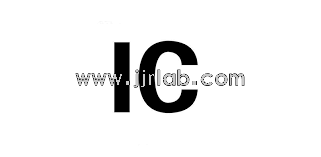
PCB Circuit Board CE Certification
Printed Circuit Boards (PCB Circuit Boards)
Printed circuit boards {PCB circuit boards}, also known as printed circuit boards, are providers of electrical connections for electronic components. With the rapid development of the mobile phone, electronics, and communication industries, it has also driven the continuous and rapid growth of the PCB circuit board industry. People have higher requirements on the number of layers, weight, precision, materials, colors, and reliability of components—a little higher.
As a large country exporting PCB circuit boards, manufacturers shoULd understand that exporting PCB circuit boards to the EU must first obtain CE certificationbefore they can sell their products in the EU.
PCB Circuit Board CE Certification Directive
PCB circuit boards have been certified according to the EU's RoHS directive. If necessary, you can also implement the WEEE directiveand reach certification.
The RoHS directive is a ce marking directive, which means that if a product is sold or placed on the market within the EU, the equipment within its scope must carry the CE mark. The CE mark is applied to the product by the manufacturer (or authorized representative, if requiRED).
Restricted Substances under EU RoHS
The EU RoHS stipulates the maximum content of the following 10 restricted substances:
1. Cadmium (Cd)
2. Lead (Pb)
3. Mercury (Hg)
4. Hexavalent chromium (Cr VI)
5. Polybrominated biphenyls (PBB)
6. Polybrominated diphenyl ether (PBDE)
7. Bis (2-ethylhexyl) phthalate (DEHP)
8. Benzyl butyl phthalate (BBP)
9. Dibutyl phthalate (DBP)
10. Diisobutyl phthalate (DIBP)
Related to RoHS is WEEE, which stands for waste generated by electrical and electronic equipment. The WEEE Directive 2002/96/ECrequires the treatment, recovery, and recycling of electrical and electronic equipment (90% of which end up in landfill). All applicable products on the EU market must be WEEE certifiedand bear the "Wheelie Bin" label.
> Therefore, it is necessary to pay attention to the content of harmful substances in PCB circuit boards exported to the European Union to ensure that they can pass the test for harmful substances.
PCB Circuit Board ce certification process
1. Testing
Conduct on-site testing and/or laboratory phthalate solvent extraction testing to determine the value of ten restricted RoHS substances.
2. Process Review
On-site inspection is used for all applicable manufacturing processes that comply with RoHS requirements.
3. Document Review
Review all suppliers' bills of materials, technical documents, assembly drawings, material declarations, test reports, and qualifications/certificates.
The technical file must contain the following:
1. General product description and design structure information
2. Risk assessment of materials, parts, and sub-assemblies
3. Compliance information about materials, parts, and sub-assemblies
4. Production documents and records
5. Uniform standards, norms, and compliance procedures
4. Certification Statement
After a successful audit, a RoHS ce certificatewill be issued.
Your Benefits At A Glance
1. Expert Partnership
JJR has extensive experience in all types of devices and regulatory requirements across markets.
2. Reduce Time to Global Markets
With our in-depth insight of global product quality and regulatory requirements, JJR optimises your costs and minimises time-to-market.
3. Single Source testing Solution
Together with our wealth of knowledge in complex regulations globally, JJR provides a complete suite of testing solutions according to your needs.
We're Here for You
We're based in China but regularly work with clients globally. We will get back to you in 1 working day.
Our Business Hours:
8.30am - 5.00pm CST (UTC/GMT+08:00), Monday - Friday
Email:hello@jjrlab.com
Write your message here and send it to us
 Amazon ISO/IEC 17025 UL Testing Service Laboratory
Amazon ISO/IEC 17025 UL Testing Service Laboratory
 How to get CE Certification for Lighting Products?
How to get CE Certification for Lighting Products?
 CE Certification Standards & Process for Elect
CE Certification Standards & Process for Elect
 Japan METI Registration & Japanese Agent Servi
Japan METI Registration & Japanese Agent Servi
 Temperature Shock Test (IEC 60068-2-14:2009)
Temperature Shock Test (IEC 60068-2-14:2009)
 Electromagnetic Compatibility (EMC) Testing Servic
Electromagnetic Compatibility (EMC) Testing Servic
 Canada ISED Certification (IC Certification) Analy
Canada ISED Certification (IC Certification) Analy
 CSA C22.2 No.42 Compliance Test Report for Amazon
CSA C22.2 No.42 Compliance Test Report for Amazon
Leave us a message
24-hour online customer service at any time to respond, so that you worry!




